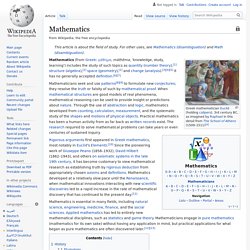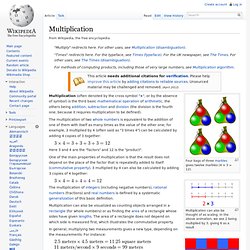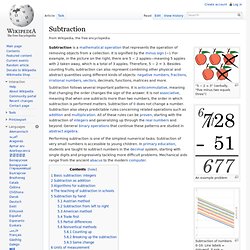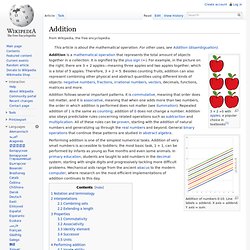

Mathematics. Field of study Mathematics (from Greek: μάθημα, máthēma, 'knowledge, study, learning') includes the study of such topics as quantity (number theory),[1] structure (algebra),[2] space (geometry),[1] and change (analysis).[3][4][5] It has no generally accepted definition.[6][7] Rigorous arguments first appeared in Greek mathematics, most notably in Euclid's Elements.[10] Since the pioneering work of Giuseppe Peano (1858–1932), David Hilbert (1862–1943), and others on axiomatic systems in the late 19th century, it has become customary to view mathematical research as establishing truth by rigorous deduction from appropriately chosen axioms and definitions.

Mathematics developed at a relatively slow pace until the Renaissance, when mathematical innovations interacting with new scientific discoveries led to a rapid increase in the rate of mathematical discovery that has continued to the present day. History The Babylonian mathematical tablet Plimpton 322, dated to 1800 BC. Etymology ). From . . Division (mathematics) Multiplication. Multiplication can also be thought of as scaling.

In the above animation, we see 2 being multiplied by 3, giving 6 as a result 4 × 5 = 20, the rectangle is composed of 20 squares, having dimensions of 4 by 5. Area of a cloth 4.5m × 2.5m = 11.25m2; 4½ × 2½ = 11¼ The multiplication of two whole numbers is equivalent to the addition of one of them with itself as many times as the value of the other one; for example, 3 multiplied by 4 (often said as "3 times 4") can be calculated by adding 4 copies of 3 together: Subtraction. "5 − 2 = 3" (verbally, "five minus two equals three") An example problem Subtraction of numbers 0–10.

Line labels = minuend. X axis = subtrahend. Y axis = difference. Performing subtraction is one of the simplest numerical tasks. Basic subtraction: integers[edit] Imagine a line segment of length b with the left end labeled a and the right end labeled c. A + b = c. From c, it takes b steps to the left to get back to a. C − b = a. To subtract arbitrary natural numbers, one begins with a line containing every natural number (0, 1, 2, 3, 4, 5, 6, ...). The solution is to consider the integer number line (..., −3, −2, −1, 0, 1, 2, 3, ...). Subtraction as addition[edit] Algorithms for subtraction[edit] There are various algorithms for subtraction, and they differ in their suitability for various applications. Algebra. "Algebraist" redirects here.

For the novel by Iain M. Banks, see The Algebraist. The quadratic formula expresses the solution of the degree two equation in terms of its coefficients , where is not equal to Elementary algebra differs from arithmetic in the use of abstractions, such as using letters to stand for numbers that are either unknown or allowed to take on many values.[6] For example, in the letter is unknown, but the law of inverses can be used to discover its value: Addition. 3 + 2 =5 with apples, a popular choice in textbooks[1] Addition of numbers 0-10.

Line labels = addend. X axis = addend. Y axis = sum. Performing addition is one of the simplest numerical tasks. Notation and terminology[edit] The plus sign Addition is written using the plus sign "+" between the terms; that is, in infix notation. (verbally, "one plus one equals two") (verbally, "two plus two equals four") (verbally, "three plus three equals six") (see "associativity" below) (see "multiplication" below) There are also situations where addition is "understood" even though no symbol appears: Columnar addition: 5 + 12 = 17 The numbers or the objects to be added in general addition are called the terms, the addends, or the summands; this terminology carries over to the summation of multiple terms. Redrawn illustration from The Art of Nombryng, one of the first English arithmetic texts, in the 15th century[5] Interpretations[edit] Addition is used to model countless physical processes.
Combining sets[edit]